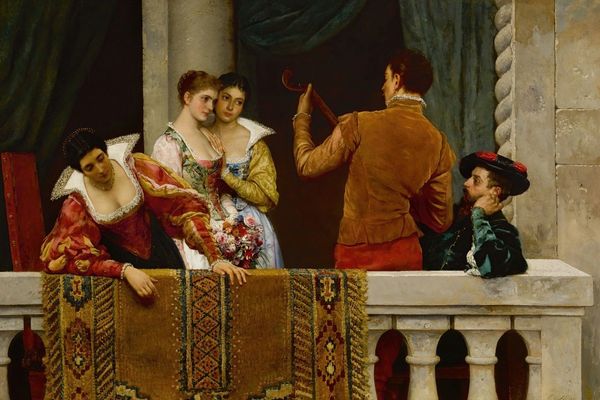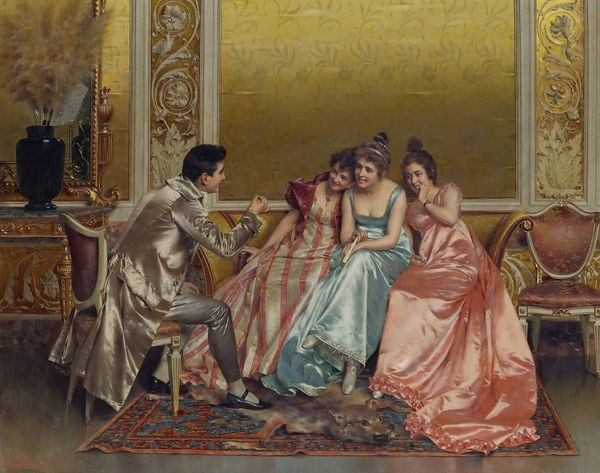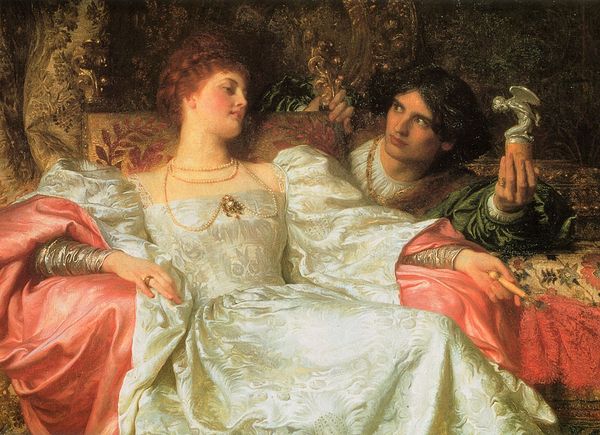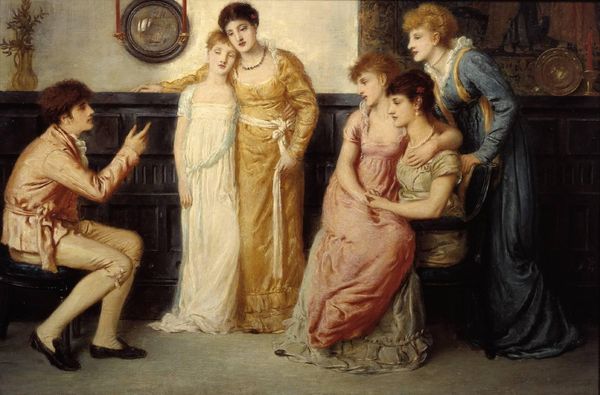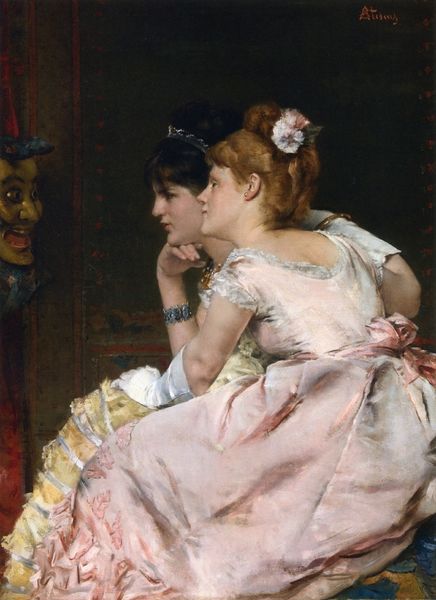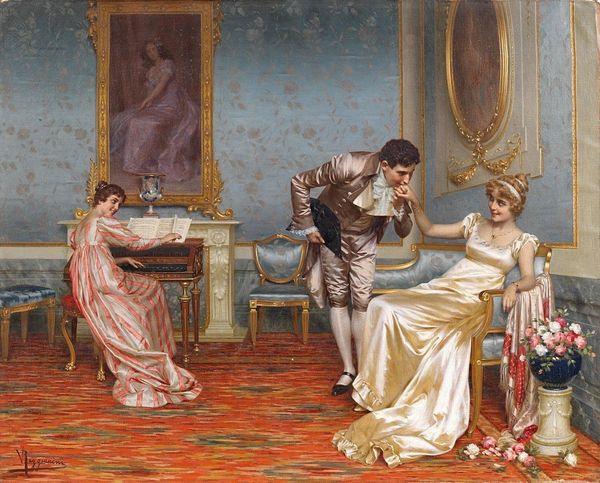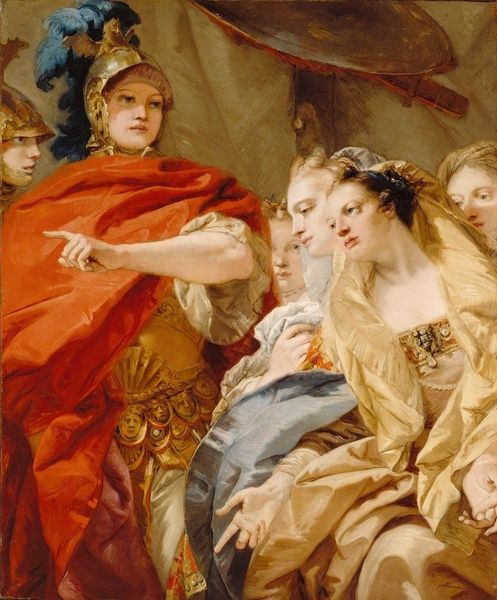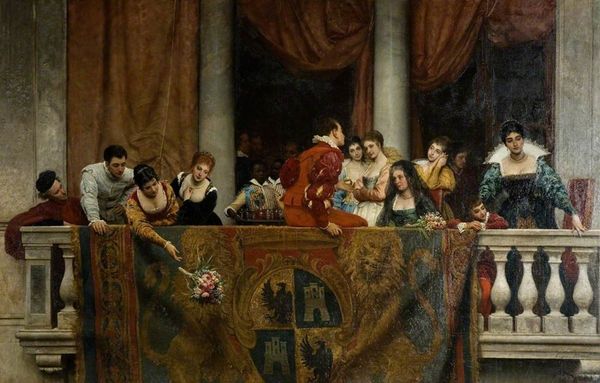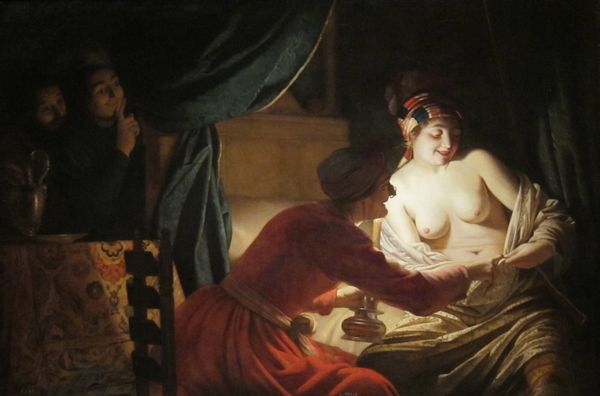
Dimensions: 103 x 68 cm
Copyright: Public domain
Editor: Eugene de Blaas's "On the Balcony," painted in 1877, really strikes me with its richness. All that impasto and those intricate costumes, particularly on the man in red. It feels so performative. How do you interpret this work? Curator: For me, this painting is interesting precisely because it documents the construction of identity through material possessions. The detailed rendering of clothing, the fan, the imported rug hanging over the balcony – these objects speak volumes about wealth and status in 19th-century Europe, where a growing bourgeoisie class was keen to display their ascent. Look at how the artist has meticulously rendered each fabric; it signifies the labour invested in its creation. What do you notice about the texture? Editor: There’s a real emphasis on the texture of everything, almost tactile. It looks like you could reach out and feel the velvet of his doublet or the stiffness of their lace collars. Is that linked to this performance of wealth you're talking about? Curator: Precisely. This almost hyper-realistic depiction invites the viewer to examine the materiality of these signifiers of class. How the artist manipulates the oil paint, layer upon layer, creating the illusion of such opulence. Think about the social context too: mass production was making such displays more accessible, blurring the lines between aristocracy and the middle class. How do you think this plays out in the painting? Editor: I guess, the painting itself becomes an object of consumption, contributing to that display. The artist is manufacturing an image of luxury. Curator: Exactly. And we, as viewers, participate in that consumption. This makes the painting itself another commodity in a cycle of production and display. Editor: I never really considered the social implications of impasto before. It’s like the thickness of the paint becomes a measure of value somehow. Thanks! Curator: And thank you; you've highlighted how the surface itself can be a site of cultural commentary, prompting me to reconsider the relationship between the act of painting and the world of commodities it represents.
Comments
No comments
Be the first to comment and join the conversation on the ultimate creative platform.
